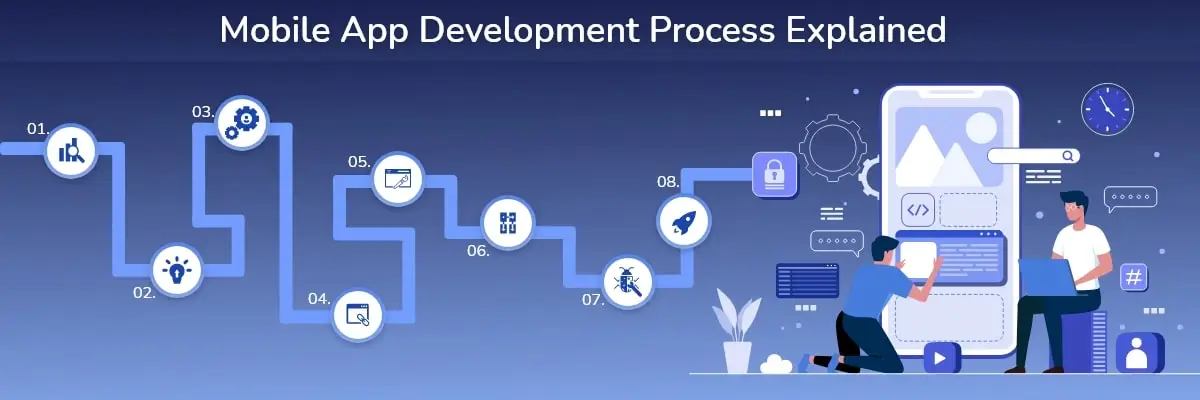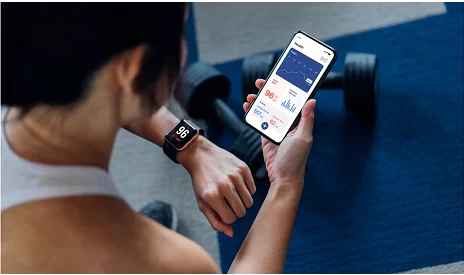
Stepping Through the Mobile-app Development Process
For both individuals and businesses, creating your first app can often seem a daunting task. Though the process certainly takes a commitment of effort and time, a well-planned product and a competent development team can help to minimize any hiccups along the way. Though many sources differ on the number (and order) of steps that need to be considered in the app development process, I have chosen an alliterative list of five to help highlight the major decisions that will need to be addressed during the creation of your v1 app.
Define:
It is important to have a strong concept before continuing on to the design and development phases of your product; an idea of what services your mobile app should provide. Sometimes your development team can help you with this step; gathering the requirements that they will need for back-end development, and helping you to streamline your concept down to the most essential elements. Keep in mind that the more functions that you want your app to perform will add to the cost and development time. It is often prudent to start small: create a product that can be distributed and used in as short a time frame as possible, and add other features once your user base has been established. This will allow the later stages (such as testing) to be done in phases, as opposed to creating a backlog of issues that all must be addressed before your app can launch.
Other limits can be established in this phase to help contain the scope of your project. One such major consideration is the platform or platforms that your app will be running on. Although the merits of hybrid-OS apps have been discussed previously in this blog, developing for multiple platforms and devices will still be more costly and time-consuming than developing (natively or not) for a single mobile operating system.
Design:
The design phase can encompass several different stages of work, some of which may take place after development has begun as well (as shown in the infographic below; though mock-ups and wireframes can often benefit back-end development as well). Wireframes and storyboards help create a narrative for developers to follow, illustrating the flow of the app; but can also be helpful for clients to help them to get an idea of what of how their app should function and feel. To learn more about how you can create apps for mobile contact Digital Fractal. Custom graphics, icons and fonts can be helpful in making your app look both unique and more professional, though this particular phase of the design process can often be left until after the bare-bones structure of the app is built.
Develop:
As shown in the graphic, development is indeed the “meat” of the app-creation process; taking the majority of the time and resources of any such project. Most data-driven apps will need considerable back-end development time, which creates front-end issues that must be addressed. The define stage will help to limit and focus this work through some important considerations: will the app be used offline? how will user-data be stored? Remember that the more data that your app handles will either mean a larger download size or a slower user interface, or both, in addition to larger development time and costs.
Debug:
Sadly, there is no way to ensure a properly-functioning and smoothly-running product without extensive testing. Depending on both the complexity of your product and the breadth of your user base, testing may entail multiple phases. Quality-Assurance testing will often be handled by the team itself during various stages of the development process, but it may also be prudent or necessary to beta (and/or alpha) test your product as well before distribution, to ensure a polished product that will not frustrate your users.
Deploy:
The launch phase can also be complicated and extended by the decisions made in the design phase; specifically the choice of which platforms to distribute on. The App Store and Google Play stores each will require certificates, screenshot and descriptions, and a separate approval process before hosting can occur. More platforms (iOS, Android, BlackBerry, Windows, etc.) will add more time before a launch can occur across all targeted devices.
Depending on your particular app, a lot of work may be needed post-launch as well. Apps will require a certain amount of maintenance as your user base and the amount of stored data grows, and a marketing strategy if you are producing a commercial app. For commercial apps, frequent updates are important as well to keep your product relevant and appearing at the top of certain lists. Features may need to be added at this point as well, if you are planning on expanding towards a v2 of your app.

